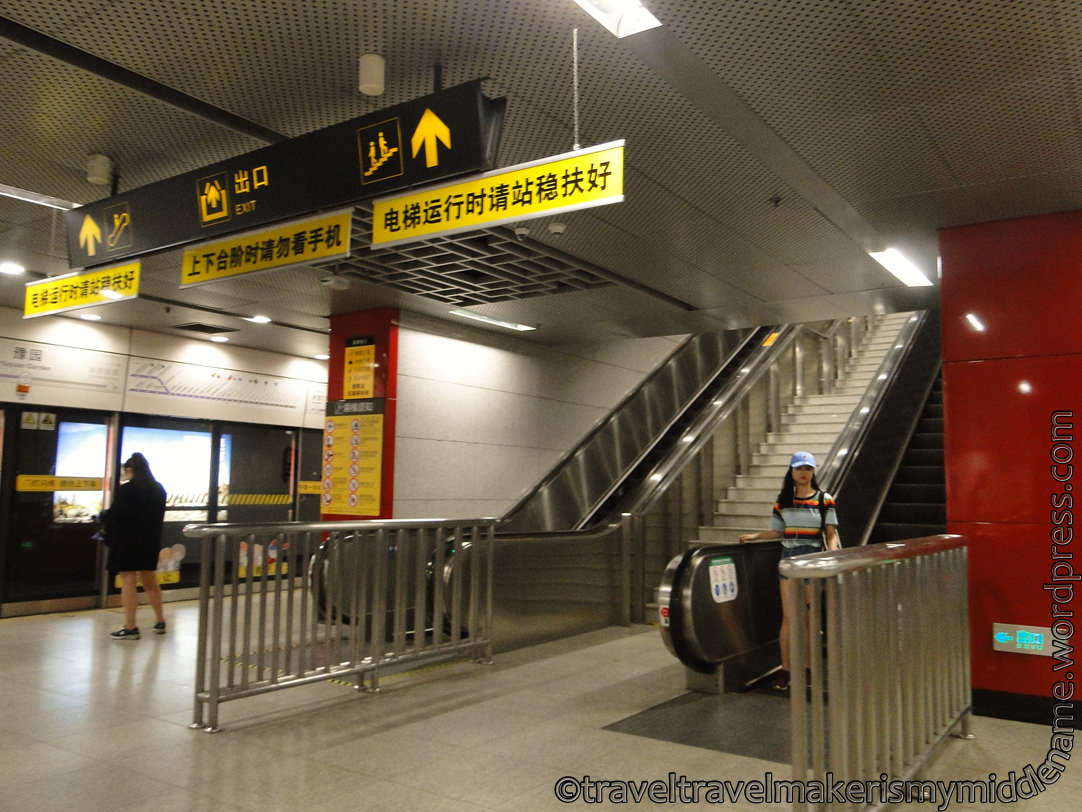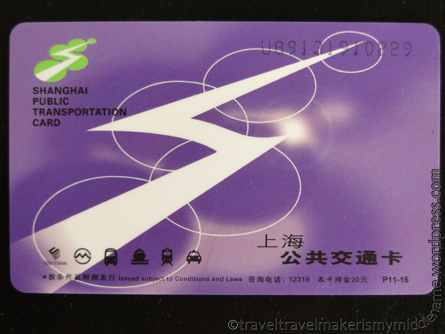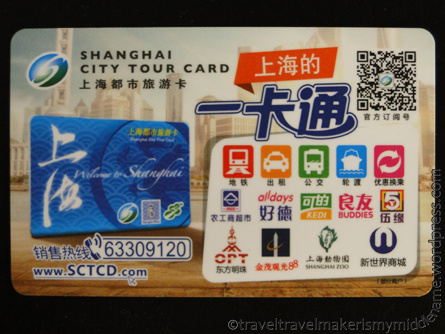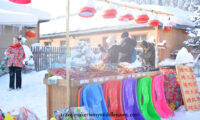Last Updated on: 27th October 2025, 07:44 pm
Are you moving to Shanghai or visiting as a tourist? Learn how to navigate the world’s busiest metro system, the Shanghai metro system.
Shanghai’s subway system, called Metro in English, is a highly efficient and fast form of public transport.
According to the Guinness World Records, Shanghai’s metro system is the world’s busiest underground train (metro/subway) system. In 2022, it transported on average, more than seven million people in any single day, and over 2 billion people over the course of the entire year. Sydney’s metro system was constructed by a Chinese company and shares many of the same features as the Chinese metro system.
Learn how to navigate the world’s biggest metro system in this guide.
What is the difference between huǒ chē (火车) and dì tiě (地铁) in Chinese?
In China, the suburban trains/subway systems are called 地铁 dì tiě, while ‘trains’ or 火车 huǒ chē refers to above ground, intercity/province long distance railway trains. Trains are further separated into high speed (高铁 gāo tiě) and normal or slow speed trains.
Most of the metro is underground, however in some parts it is above ground.
Like many cities now, the metro system uses a reloadable plastic card as a ticket. Short term visitors can purchase a single use one way ticket. These tickets can be bought at any of the numerous ticket machines inside the metro station with cash or card, but if you are planning on use the metro for more than a few trips you can consider getting a reloadable card. The card is used to tap in and out at each station.
There are a few types of reloadable transport cards. First, there is a 3 day one for short term tourists, the card can be kept as a souvenir at the end of your 72 hours, starting from first use. Then there is a special card that they release for commemorative events like special festivals and events with a special image printed on it, but functionality wise it is no different.
I will talk about the long term transport card, which locals use and anyone can buy for a deposit of ¥20. But first I’m going to describe the metro stations.
The metro stations
On maps and when on the streets, look out for this logo when looking for metro stations.
The entries to the metro stations are mostly at street level and lead downstairs to underground. Each metro station has multiple entries/exits, these are all numbered so it is easy to specify where to meet up. Most have escalators at least going up (out of the station to street level), but you will have to walk down the stairs yourself to go in, which can be difficult with luggage. The actual barriers/entry to the platform is at least a few tens of metres away from the entry.
Security check:
To enter the ticket barriers, everyone has to go through a security check, where all bags larger than A4 is scanned in an X-ray machine, similar to security at the airport, but much much faster (in and out in less than a minute). There are illustrated large posters educating people about what to do in case of emergencies such as chemical, fire or bombings on the wall to educate even young children, and there are also bomb proof containers. Major shopping centres and attractions like the Oriental Pearl tower and the Shanghai Museum also have security checks, although they can be much, much slower.
Understanding what the Shanghai Metro signs mean
The metro signs in Shanghai have Chinese Hanyu and English words and Hindu Arabic numbers and colour coded line numbers, making it easy to identify the name of the station, the entry/exit, and the line that the station is on. Here is how to read them.
This is People’s Square Station, as indicated by the words in the middle of the sign at the top of the entry. The large number on the right hand side indicates it is entry/exit number 1. The numbers 1, 2 and 8 in squares on the left hand side indicate that this station has subways that travel on lines 1, 2 and 8.
Most road signs are also in both Chinese Hanyu and English. You’ll see policemen in the black uniform near many metro stations and public places.
You’ll see policemen in the black uniform near many metro stations and public places.
Getting around inside the metro stations
Some of the metro stations in Shanghai are huge, like an entire underground mini city. The larger ones all have their own mini shopping centre inside, with dine-in restaurants and convenience stores, and are directly connected to large shopping centers with their own entry point. One of the largest ones, People’s Square station, has 18 entries/exits and takes a good 10-20 minutes to walk from the platform to one of the further exits, but the good news is, it is underground and weather proof.
The metro stations are organised very well. In all stations, sufficient signs in both Chinese Hanyu and English direct you to where you want to go, including exits and what attraction they are best for, if applicable. There are signs on the wall, attached to the ceiling as well as underfoot.


 For a video of inside a metro station, click here
For a video of inside a metro station, click here
Lines and changing lines
Each metro station is on a particular line which is colour coded and numbered, and usually has only one platform with 2 sides, one for each direction. Exceptions are in some stations that have ‘interchanges’, which is a platform where you can change to a train/subway on a different line.
Each platform has multiple entries going down or up allowing people to move out quickly when they arrive (in peak hours, there can be a lot of people lining up for the escalators). All entries have 2 escalators, one going down to the platform, another goes up from the platform with stairs (a bit steep) in between. There are also accessible lifts for wheelchairs and strollers and people with luggage.

If you look up, you’ll notice how even the air conditioning vent is in a Chinese geometric pattern.

The subway platforms are enclosed and only open when the subway arrives.

There are seats on the platform while you wait for the next service.
Using the card

Where you can use the card:
On one side of the card, you can see the logos on the bottom left hand corner that indicate that the card can be used on buses, ferries, subways, maglevs, and even taxis. The number on the top right hand corner is the card number. Put this number into the text box on the left hand side on http://www.sptcc.com/ to see the amount of credit left on your card. The website is in Chinese only and like a lot of Chinese websites, uses text in pictures instead of text on the page, so might not be translatable.

Using your card
After walking through the security check, at the barriers to each station, you tap in as you enter the turnstiles, and tap out when you arrive. There are designated entry and exit barriers at each station. When you tap on it will show the balance of your card very briefly on the screen where you tapped your card, and it will show how much was deducted and how much is left when you tap out.

Green arrow indicates entry, tap to enter.

A red circle with a line through it indicates an exit (No entry), tap to leave.
Beware: Unlike Sydney’s Opal card system, there is no reverse tap on; you will be charged as long as as you tap in. For example, if you got off at the wrong station and want to go back in, or even tapped into the wrong station and want to go back out, as long as you tapped in, you will be charged the minimum of ¥3. I once did just that, I tapped on and realised I should’ve gone to a different station, when I tapped out, ¥3 was deducted from my card. (Might not be a big deal but with only 1-2 days left of my trip, there was no need to recharge another ¥10 and that ¥3 could’ve gone towards a meaningful trip).
Recharging your transport card
The transport card can be used on all public transport including buses and ferries, as well as taxis, and a variety of stores (www.sctcd.com is a website for the group of companies that work in partnership with the shanghai metro station card). To recharge the card, self service recharging machines only accept bank cards, or you can use cash at a customer service desk where you get it topped up in person, just hand over your card and the amount you want to recharge it with, in multiples of ¥10.
Cost/Fares
The Shanghai transport system does not have separate cards for children and the elderly, everyone uses the same card type and pay the same fare, however the fares are quite reasonable.
The reloadable card can be bought at many stations at a customer service desk. It costs a deposit of ¥20, and this is refundable along with any amount unused after you return the card (if you choose to do so) which you can do if you are a tourist and do this before you leave. You can return the card at many stations.
The fares are charged based on distance travelled, so the further you travel, the more the fare is, but the cap is ¥9 for one trip, and each trip starts around ¥3. If the trip costs a few more yuan than the balance on your card, it will still let you through, but the extra amount is deducted when you recharge next. If the trip costs a lot more than what you have left, you will not be allowed through the barrier.
Transfers:
A transfer within 30 minutes is free. In some stations, the transfer station is outside the first station, so you must leave (tap out) and tap back in, but if you do so within 30 minutes, it is considered a transfer. This was such the case when I caught the metro back from Tian Zi Fang at Dapuqiao station back to my place of stay at Shanghai Zoo station.
You also get discounted fares for the rest of the month if you make a certain number of trips in a certain amount of time each month.
What’s its like to travel on the subway
Given the population of Shanghai, the subways are designed for efficiency. They come at regular short intervals of about 5 minutes and decrease in frequency in later hours, down to about once every 10 minutes (even after 10-11pm).
The subway stops at all the stations on that line, exceptions include when there is a fork in a line and trains alternate between which prong of the fork it will go on.
The subway is usually full of people in peak hour and at popular places like People’s square. If you are travelling without large items (luggage, strollers etc) then there is really no point in waiting for the next service as that one will be just as crowded. Get ready to leave before the train arrives at the next stop if you have a lot of luggage or if there are a lot of people, as the doors aren’t open for a long time.
Inside the carriages, some people often distribute flyers and advertisements, people just ignore it.
Understanding the signages inside the Metro
At the top of the doors on the platform and on the signs facing you as you come down the stairs to the platform, there are names and arrows telling you the next station that the subway on that platform will go to and the direction it will head, so you can go in the right direction. The signs are in English so it is easy to understand.

In the picture above, the track on the left side goes towards Fujin Road (but Fujin Road is not the next stop), and the one on the right goes towards Xinzhuang.
The largest text in the middle of the signs above the door tells you the current station, so if you miss the announcement you can always look out the window and see what station you just arrived at.
If you end up in the wrong station, simply get out at the next station and change to the opposite side. The service is fast and frequent and stops at all stations on that line.
 A train/subway arrived at a station, before the door opens.
A train/subway arrived at a station, before the door opens.
This sign on the platform says, from left to right: “Next Stop People’s Square”. The middle large text indicates the current stop is East Nanjing Road, then the small text on the right says “last stop was Lujiazui”, while the arrow tells you which physical direction the subway is headed, and cut out of the picture is text that indicates the direction the subway is headed, towards which terminal station. Oftentimes directions for a subway will be given in the form of which terminal station you should go in, for example in the app MetroMan, which I will talk about below.
Announcements and staying informed
There are recorded audio announcements on the platforms as well as inside the train, announcements on the platform are in Mandarin, while announcements inside the train are in both Mandarin and English.
On the platforms the signs above the doors look more like this:

The coloured stations have already passed, the red station is the current stop, and the grey stations are where the subway on that platform will stop next. The colour depends on the line.

In the example above, the current station is Longxi Road, and the train can head towards either Shanghai Zoo or Longbai Xincun. There are audio announcements as the subway arrives, as well as lights and indications on the monitor and the front of the subway as it arrives, however they pass by really fast.

Electronic signs on the platform indicates the direction the current train service heads towards (top row) and the direction the next service will head towards, and the following one (bottom row). This way you know which one to get on, if it is at a forked station. These signs are in Chinese only, but to make it easier for you, “本” means “this” (train), and “下” means “next” train.
Plan ahead! The metro trains don’t run 24/7

There are monitors that display service information to include the next subway, the 2nd and 3rd on following and the last one of the day, and the time they will arrive. On these monitors hung from the ceiling, only the right hand side has the useful information. This section changes every few seconds to fit all the information in. The main part is advertisement.
In the photo above, the top section shows the time until the current/immediate next service will arrive (here it is 00 minutes and 00 seconds because it has already arrived and currently on the platform). The bottom one tells you when the next one after will arrive, which is 5 minutes 16 seconds. At the very bottom in blue is the current station, and in between is a simplified map of the next few stops. This section will change to show when the 3rd and 4th train after the current one will arrive, as well as the first and very last service of the day. The Shanghai metro system does not run 24/7, so plan ahead so you don’t get stranded somewhere.
Click here to see a video on how to read a changing monitor (new window).
The subway service does not run 24 hours a day, even in the city. Instead they close for the day around 10-11pm, depending on which station it is, bigger ones close later.
The metro station, while large, isn’t one open space, the paths are divided with metal barricades to allow flow of traffic in one single direction, so as long as you follow them and the signs, you can’t get lost.

For convenience, the larger stations also have designated “meeting places” (large brightly coloured posters on large columns), or you can meet at a numbered entry/exit.
Inside the metro trains
The interior of the train are all on one level. The carriages are connected and are lined with hard plastic seats that face the opposite side, leaving maximum space in the center of the carriage to allow for more people standing. The carriages are all air conditioned. Ride duration between each stop is about 3 minutes.

This photo was taken at a relatively off peak time at lunch time (1:15pm). Usually there would be a wall of people and you would not be able to see through to the next carriage.
Just before each stop, an announcement is played once in both Mandarin and English (it is a pre-recorded message and in perfect American accent so you will be able to understand) will tell passengers the name of the next stop and which side of the train the door will open. Inside the carriages above the doors are electronic line maps with the stops already passed indicated with a red light, future stops off and next stop flashing.
There are no gaps between the carriage and the platform, and the metro floor and the platform floor are perfectly flush with each other, so it is easy to get on and off if you have luggage, but it may be hard to get them in, depending on where you are getting on, due to the amount of people inside.
A word of warning: Mind the doors!
One word of warning, the doors close really fast and are automatic, and there are rarely, if at all, any staff on the platform. While there are zones for lining up to enter the train and zones for leaving the train drawn onto the platform, unfortunately no one really abides by those rules. Click here to see a video of people getting on/off the subway and here to see what a platform looks like (new window).
Be prepared to stand as there are limited seats. Another word of warning, the inertia is pretty strong.
Get the useful smartphone App
MetroMan is a very useful app that lets you search timetables, line maps and trip routes by entering the departure and arrival station, and gives exact instructions on how many stops there are, trip fare, trip duration and number of transfers if any. It is available for Android and Apple.
Here’s how to use it.

You can choose English as your language and all information is including the stop names are displayed in English. You can even choose which city you want the information for.

You can view a map, or search for a station. The names of the station are in English as well as Chinese Hanyu.

Select your ‘from’ and ‘to’ station or click on the arrows for a reverse trip.

Sometimes there are multiple options. The options tell you what the fare will be, how long the trip will last, and the time it arrives in the station, as well as the distance.

Select one to see the details. The circle indicates a change is needed.



Airport transfers with the metro
The metro system has escalators and lifts, and services the city well including Shanghai Pudong International Airport, Shanghai HongQiao Domestic Airport, or Shanghai train stations (there are multiple train stations). If you are arriving in Shanghai by plane (domestic or international) or train, depending on the time, consider catching the metro to your arrival destination instead of catching a taxi, as a taxi is more expensive. However, the metro may be a lot slower. For example, a taxi from Shanghai Pudong International Airport to JiaDing suburb costs ¥300-400 (day and night respectively) for 90 minutes but a metro ride costs around ¥50, but a little over 2 hours.
And now that you know how to use the metro system, click here for more things to do and see in Shanghai!
Thank you for visiting my website. Please consider donating to my fundraiser if you are able to, or share my fundraiser if you cannot. You can read about me on my About page.
©All rights reserved for all content and photographs, usage on 3rd party sites are forbidden without permission. Photos are taken by author unless otherwise stated.








Oh the metro system has grown from the two lines when we lived in Shanghai! Today it is so much more comprehensive and serves the outlying districts well too!
Yes, almost everywhere you go there is almost certainly going to be a metro stop nearby. Thanks for reading!
Pingback: Jin Jiang Inn -A review – Happy Traveller
Pingback: Oriental Pearl Tower Shanghai, China – Happy Traveller
Pingback: A Great Guide to the World’s Biggest Metro System – David C. Ahnen